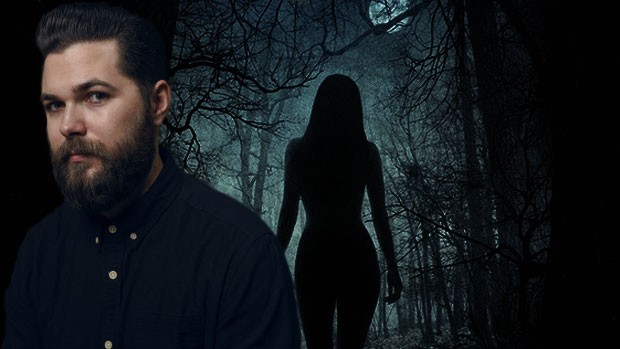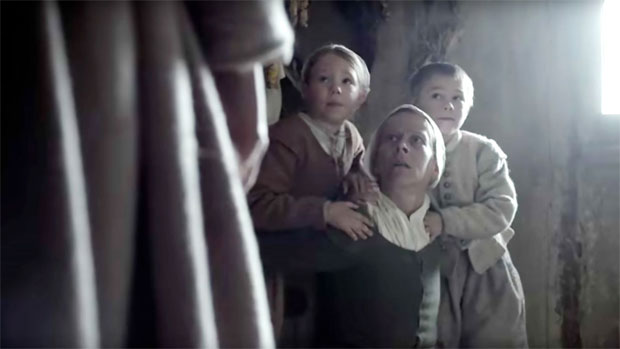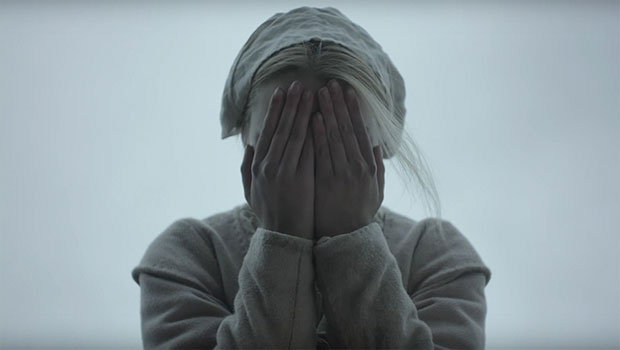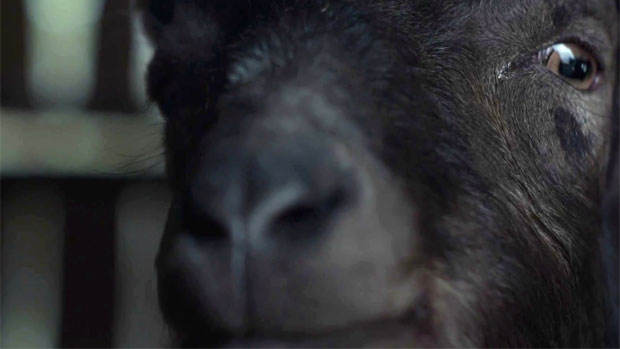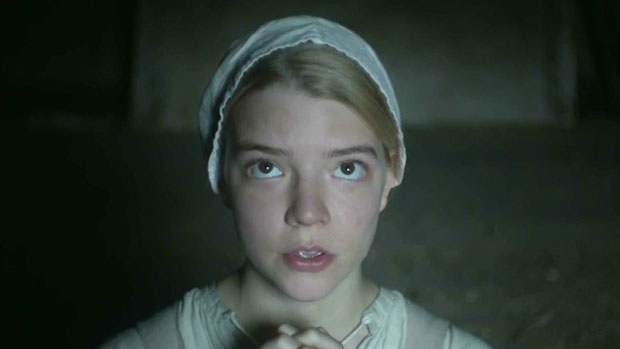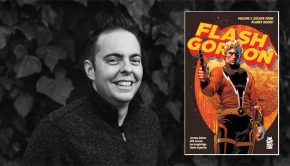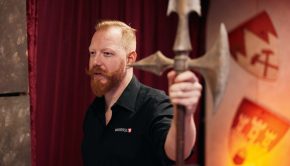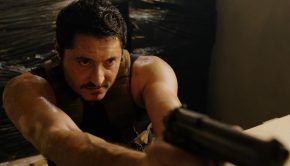THE WITCH: A New England Folktale (Robert Eggers Interview)
Synopsis: New England, 1630: William and Katherine lead a devout Christian life, homesteading on the edge of an impassible wilderness, with five children. When their newborn son mysteriously vanishes and their crops fail, the family begins to turn on one another. In his debut feature, writer/director Robert Eggers painstakingly designs an authentic re-creation of New England — generations before the 1692 trials in Salem — evoking the alluring and terrifying power of the timeless witch myth. Told through the eyes of Thomasin, the teenage daughter (Anya Taylor-Joy), The Witch is a chilling portrait of a family unraveling within their own fears and anxieties, leaving them prey for an inescapable evil.
Q&A with Writer and Director Robert Eggers
What was the inspiration for THE WITCH?
I grew up in New England, and ever since my childhood, New England’s past has been part of my consciousness and witches have always been part of my nightmares. I wanted to create an archetypal New England horror story, a nightmare from the past. I wanted to create a film that would feel like an inherited nightmare of a puritan family, and take audiences to the childhood place where witches are real and terrifying.
What was your writing process like?
The writing process was long and involved. After the moment of inspiration it was a simultaneous process of research and writing. I researched the grammar structure and vocabulary heavily, and I made a phrase book from pulling quotations from period sources and that I used to create the dialogue as well. Sometimes I’d find a passage in a diary and that would inspire a scene. Many of the things the children say come right out of Cotton Mather’s or Samuel Willard’s accounts of witchcraft and possession. Most of the prayers are truncated versions of prayers from a puritan prayer manual and so on.
After ten months I had a first draft and Lars Knudsen and Jay Van Hoy came on board. I couldn’t have been luckier to have such fantastic, supportive and creative producers. Their notes really informed how the final film would take shape. It was also at this time that producer, Jodi Redmond, with her passion and insight to the film, contacted Plimoth Plantation about their involvement. Many trips to Plimoth, working in their library, spending time in the colonial village, talking with their staff, were crucial in informing the script. There were several revisions that also went through our historian Jim Baker who pointed out any anachronisms and helped me to find historical evidence to support certain story points. Finally, I was fortunate enough to became a Sundance Institute Cinereach Feature Film Fellow. Sundance’s support continued to push me further and further in the writing process. All in all, it was about four years of work before we had a shooting script.
Can you talk about the casting process?
I was very fortunate to have investors and producers who saw the power in casting the film without stars. The family needed to be real people, not actors with dirty faces. I had been aware of Ralph Ineson for years, and it was his voice that I imagined as William’s as I wrote the script. His persona was an anchor for the rest of the casting and he delivers a moving, powerhouse performance. His commitment to the project set the tone for the cast and crew as he brought unwavering energy and love to work with him every day. Kharmel Cochrane was our fantastic UK casting director. While we looked at child actors out of London, we quickly realized that we needed to expand the search to schools across the North of England. It was crucial that the youngest actors were using their native accents or the authenticity of their performances would fall apart. Kate Dickie was recommended by our Canadian producer Daniel Beckerman. When I saw her performance in Red Road I was hooked. She also received a written recommendation from Andrea Arnold that was the most superlative letter about anyone I have even seen, and Kate deserves it. I have never seen such a dedicated and emotionally available artist. Ralph and Kate’s work with the child actors was invaluable to the piece. We were fortunate to have a week of rehearsals prior to principal photography during which we were able to develop trust and strong relationships within the family unit. In this story, we see the family at their worst, so there needed to be a sense of underlying love.
How did you discover Anya Taylor-Joy, who plays Thomasin?
Many excellent young actresses auditioned for the role, but it was immediately clear that Anya was the only person who could play Thomasin. Anya’s screen presence is electric, you can see every thought in her head and every flash of emotion in her eyes. She is also a mature, intelligent actress that can imbue her performance with a weight well beyond her years. Even in the audition, she delivered every line exactly as I had imagined it as I wrote the script. My collaboration with Anya was paramount in the success of this film.
What was it like directing children, and working with a mostly young cast?
Extremely fun and satisfying. I love working with children. They have amazing imaginations and are fully committed to their “play.” People say children are difficult to work with, but I find they are no more difficult than adults. The only difficulty is that they can’t work long hours, so there is more pressure to work efficiently.
Where exactly did you shoot the film?
We shot in an abandoned lumber town called Kiosk in Northern Ontario, that is now almost entirely overgrown with forest. Kiosk is within The Unorganized South Nipissing District, population 80. We found a small open field there, surrounded by large white pines and hemlocks, similar to New England, and we knew it was the spot. It was an extremely remote and difficult location with no wifi or cell service. It was about an hour from the rural and gracious town of Mattawa, where our cast and crew were housed.
How did you recreate this specific time and place? How did working with and shooting at Plimoth inform the film?
Years of research went into understanding the everyday life of an English settler in early New England. In the writing process, I wanted to understand the agricultural traditions from England and how they would have changed coming to North America. By having a firm grasp of the world as I wrote, in my head, I had a dollhouse, dolls, and all of their props to play with. All of that was developed through my own research and a great deal of time at Plimoth Plantation, and would not have been possible without the generosity of the Plimoth Plantation staff.
Craig Laithrop, the production designer, showed up to his first interview with in-depth research that matched the kind of work that I was doing, and it was clear that this could be a great collaboration. Craig accompanied me on a research trip to Massachusetts and at certain sites (not at Plimoth). Craig knew more than our guides about the houses we were visiting. He was fanatically uncompromising about the creation of the sets for the film, which were often closer to real structures than sets. Everything that appears on camera is made out of the correct building materials that a Puritan family would have used, and authentic techniques and tools were used wherever necessary. While we used plenty of modern technology like chainsaws and drywall screws to complete the set in a timely, cost-effective, responsible way, it was essential to have, for instance, hand-riven oak clapboards to sheath the structures, reed-thatched roofs, and hand-forged nails to make the world believable.
How much historical research did you do while writing the film? How did you use this research to inform the mythology and superstitions of the film?
A great deal of research went into this film, from reading the Geneva Bible to Elizabethan witch pamphlets to revisiting the fairytales of the Brothers Grimm and taking long walks in the woods of Massachusetts. One of the most interesting things that came out of the research was the idea that for people of the early modern period, there is a blurry line between the real world and the fairytale world. Everyday life was supernatural and that was a fact. Today, education on the early modern period addresses the horrific persecution of women who were accused of witchcraft.
In addition to this despicable aspect of our history, I became interested in the archetype of the witch, and its important role in the early modern mind, representing and physically embodying the darkness within us all. The witch was the answer to unanswerable tragedies, gaining power from despair. If a child died or a cow stopped giving milk, the reason could be a witch. The witch was the antimother, the fairytale ogress who ground up children’s entrails to give her the power to fly. The witch of the early modern period is much more terrifying than we can remember.
Another crucial aspect of the research process was understanding the minds of devout Puritans. It was difficult for me to relate to at first, and understand how believing in extreme Calvinism and predestination could be a gratifying and hopeful way of living. However, through reading diaries and letters that allowed me to see their day-to-day activities, love, loss and struggle more intimately, I was able to find a connection. It also dawned on me that in the extreme ritual of daily life and in imbuing daily life with sublime significance, they were living their lives as a work of art. While I would never choose this dogmatic lifestyle, through the writing process, I came to love this Puritan family and I believe audiences will have compassion and empathy for them. As different as their world was, audiences will be able to find aspects of themselves within the characters.
How long was the shoot?
26 days.
Describe how you worked with your cinematographer, Jarin Blaschke, to attain the distinct look of the film?
Jarin and I have known each other for years. He shot my shorts and we also worked together on many films, with me as a designer. I certainly have been developing my language as a filmmaker through my collaboration with Jarin. He is one of the most talented and inspired people I have ever met. Jarin and I both love golden age fairytale illustration and this was a touchstone for our relationship and a major influence for us. We light for realism and all the performances and objects should be real, but we can compose for a dream world at the right moments.
In regards to light, we used natural light whenever possible and chased weather to keep exteriors gloomy and oppressive. We spent extensive time at Plimoth Plantation with a light meter understanding how dark these post-in-ground cottages would have been and tried to recreate the look in the film. In order to get proper exposure the windows in our house were very slightly enlarged. Early settlers had tiny windows to shut nature out. For night interiors we only used open flame, except for one shot when it would have frightened an animal. Custom-made triple-wicked candles were hand dipped to look like the lumpy tallow candles that would have been used in the period, but the three wicks made the candles much brighter so we could light with them.
We shot ARRIRAW for 90% of the film and used rehoused lenses from the 1940s. We also shot in a 1.66 aspect ratio because we wanted a frame with more height so that the woods would be taller and more imposing, while providing more intimacy and claustrophobia in the interiors. 1.66 also gave us a higher resolution than 1.85, and revealed more of the odd characteristics of our old lenses, due to the Alexa Plus’s native 4:3 aspect ratio.
Discuss the use of makeup in the film, especially as it pertains to creating “The Witch”
Except for a few exceptions, there was no makeup in the film aside from dirt and bodily fluids. Ralph, who plays William, spent months growing out his beard, chopping wood and lost a significant amount of weight to look like a strung out Puritan father. On the witch herself, we did not use makeup effects besides contouring, breakdown and some hair work. We simply cast a 90 year old woman with the appropriate anatomy and physiognomy to play an archetypal witch. While the use of makeup was minimal and subtle to capture a sense of realism, our makeup artist, Traci Loader, took the utmost care in making sure that every detail was attended to. Working at this subtle level required a great deal of skill and Traci was exemplary in her commitment to the grime and grit – the fingernails and teeth. Traci also created the “flying-unguent” using ancient clay compounds, and researching the authentic herbs that witches were thought to have used – and a secret ingredient in the place of baby entrails.
Who was your costume designer, and how did she create the 1600’s outfits?
Linda Muir was our costume designer. I had done years of research before meeting Linda and I really knew what I wanted before she came on board, but she brought my vision to a new level with her huge imagination, knowledge and attention to detail. Linda consulted with Stuart Peachey, who is the foremost expert on English common people’s clothing from this period, and his massive body of work was her bible. The garments themselves were made from wools and linens that Linda found to match historically accurate samples sent from Stuart. All visible seams on all the clothing, even on the inside of the garments, were hand stitched.
How was the score created? How closely did you work with your composer?
I worked very closely with our composer Mark Korven in creating the score. I listened to a lot of 17th century music while writing and researching, as well as a lot of very dissonant 20th century classical music, and I wanted to create a fusion of the two.
Mark Korven has an incredible knowledge of music history, and understands the sounds of the period, while also having an ear for the uncanny and the bizarre. My concept for the score was to use 17th century psalm settings that New England puritans would have sung as a base for the family, transforming into crazy dissonant atonal music with the witch and the supernatural elements of the film. The other part of my concept was to only use period instruments, vocals and percussion.
My inclination was to use a viol consort to play everything. We used viols, but Mark also introduced me to some other unique period instruments like the nyckelharpa, as well as a primitive fiddle that dates back to the 11th century, played by Ben Grossman (who also played the hurdy gurdy). Ultimately, the nyckelharpa and the primitive fiddle were more prominent in the score than the viol. The one non-period instrument we used was a waterphone, a steel nail-violin and percussion instrument, which organically produces some of the most ethereal and other-worldly sounds I have ever heard. Mark also brought in the Element Choir let by Christine Duncan, a very raw and exciting experimental choir that is the voice of the forest and nature in the film.
Discuss your background in film, and your previous filmmaking experiences
I have directed and designed a lot of theater and a few short films. I also worked extensively as a designer for film, theater and print.
What was the most difficult scene to shoot?
There were almost no easy scenes to shoot. There were almost no simple shots. From laying 60-80 feet of dolly track nearly every day we shot exteriors, to the animals, the child actor’s short hours, complex practical FX, unpredictable weather conditions… not to mention extremely high stakes emotional scene work… it was a difficult shoot.
Which filmmakers had the greatest influence on you?
Bergman and F.W. Murnau are the filmmakers I admire most. I am inspired by Tarkovsky’s articulation of memory through atmosphere, but of course his work is on another plane. I am also inspired by artists from Dürer, to Goya, to Hyman Bloom, and also golden age illustrators like Harry Clarke and Arthur Rackham – these artists probably shape my taste more than any filmmakers.
What films influenced this film?
While folktales, fairytales, personal nightmares, paintings and illustration were my primary influences on The Witch, the film is very much in debt to The Shining, which I have seen maybe more than any other film. Also Bergman’s Cries and Whispers, which is scarier than any “horror film” I have ever seen.
What was it like directing a goat, and working with an animal on set?
Working with goats was extremely difficult and frustrating. I would not recommend it to anyone. Ever. However, our trained raven and hare were truly easier to work with than most humans.

